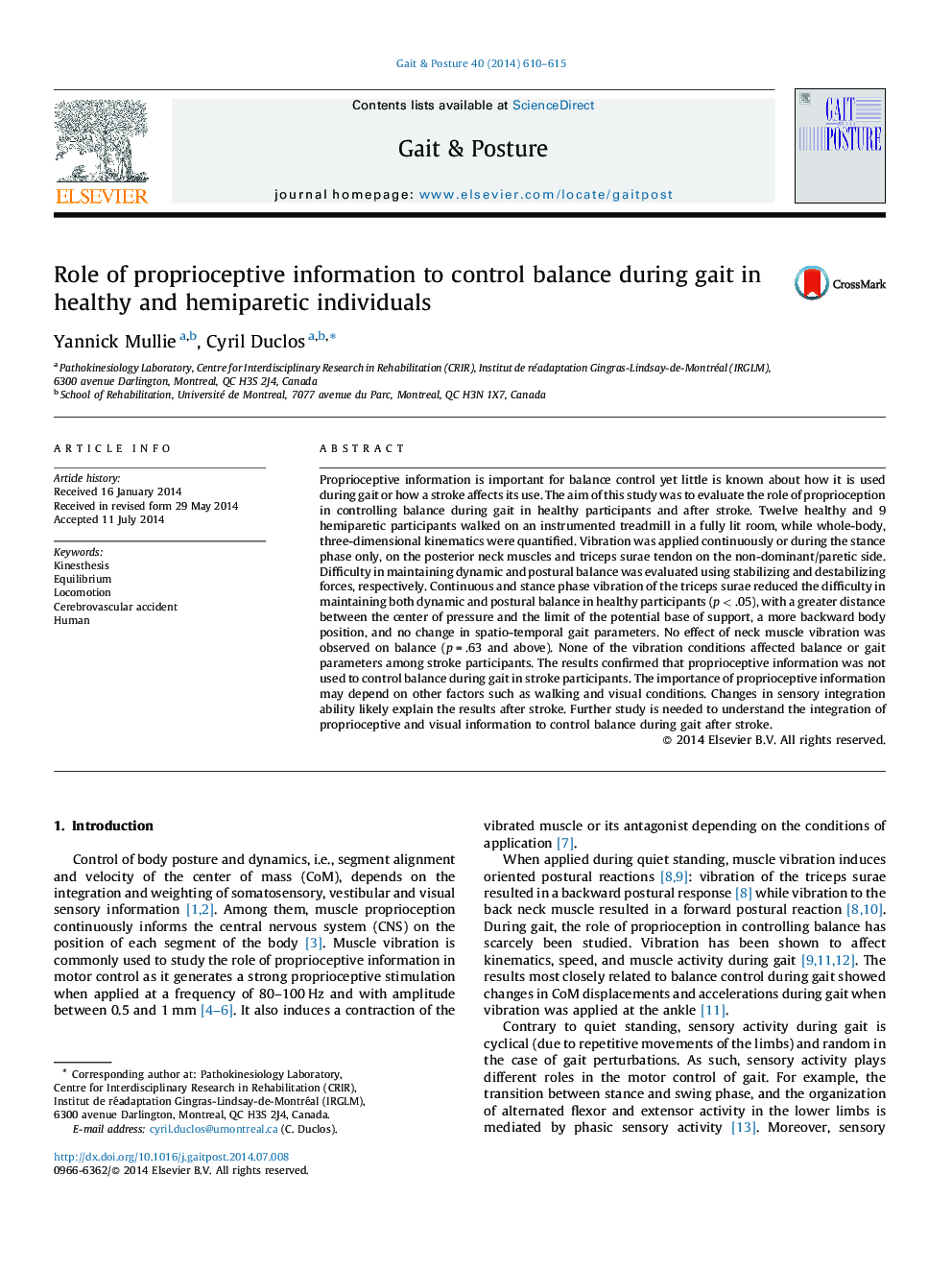| کد مقاله | کد نشریه | سال انتشار | مقاله انگلیسی | نسخه تمام متن |
|---|---|---|---|---|
| 6205952 | 1603853 | 2014 | 6 صفحه PDF | دانلود رایگان |
- Triceps surae vibration reduced balance difficulty during gait in healthy subjects.
- Use of ankle and neck muscle proprioception to control balance differed during gait.
- Visual and walking conditions altered the use of proprioception to control balance.
- Proprioceptive information is barely used to maintain balance during gait post stroke.
Proprioceptive information is important for balance control yet little is known about how it is used during gait or how a stroke affects its use. The aim of this study was to evaluate the role of proprioception in controlling balance during gait in healthy participants and after stroke. Twelve healthy and 9 hemiparetic participants walked on an instrumented treadmill in a fully lit room, while whole-body, three-dimensional kinematics were quantified. Vibration was applied continuously or during the stance phase only, on the posterior neck muscles and triceps surae tendon on the non-dominant/paretic side. Difficulty in maintaining dynamic and postural balance was evaluated using stabilizing and destabilizing forces, respectively. Continuous and stance phase vibration of the triceps surae reduced the difficulty in maintaining both dynamic and postural balance in healthy participants (p < .05), with a greater distance between the center of pressure and the limit of the potential base of support, a more backward body position, and no change in spatio-temporal gait parameters. No effect of neck muscle vibration was observed on balance (p = .63 and above). None of the vibration conditions affected balance or gait parameters among stroke participants. The results confirmed that proprioceptive information was not used to control balance during gait in stroke participants. The importance of proprioceptive information may depend on other factors such as walking and visual conditions. Changes in sensory integration ability likely explain the results after stroke. Further study is needed to understand the integration of proprioceptive and visual information to control balance during gait after stroke.
Journal: Gait & Posture - Volume 40, Issue 4, September 2014, Pages 610-615
